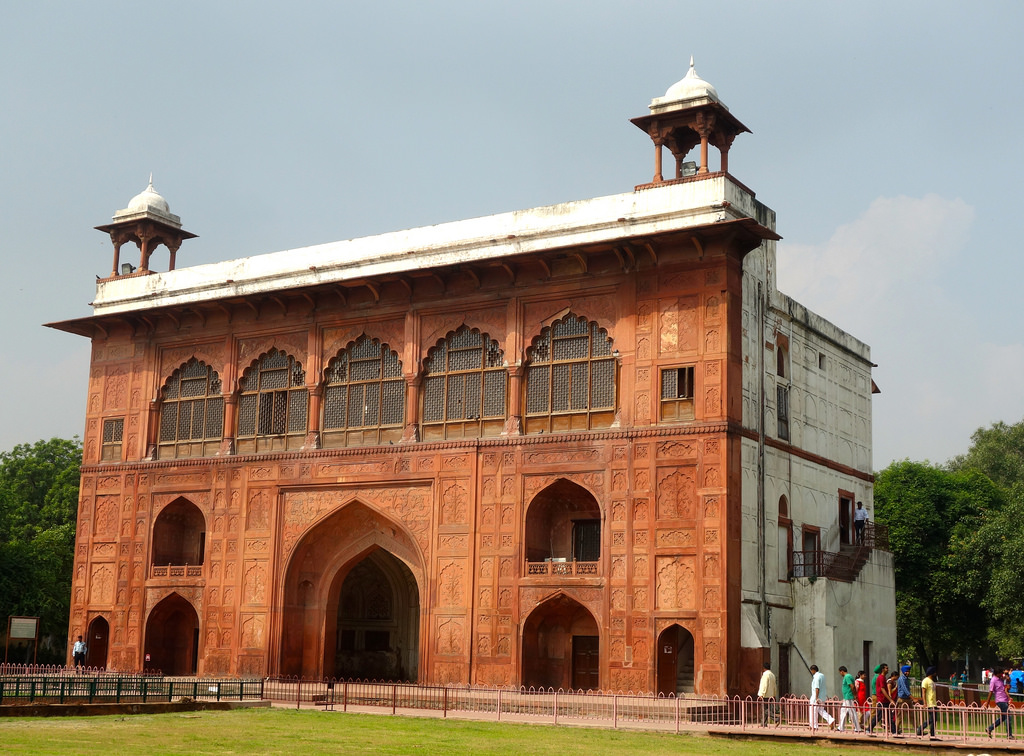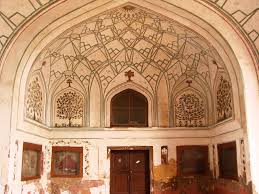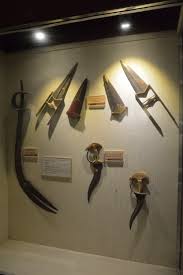Delhi Dairies
Orchestra Pit: Naubat Khana

Naubat Khana or Naqqar Khana (meaning the drum house) in Red Fort built by Shahjahan inspires wide-eyed awe for unparalleled lavish grandeur. See for yourself a structure in glistening rose-red sandstone, lavishly glazed with coats of sparkling white shell-like plaster and profusely embossed with intricate floral representations, then visualize the last exquisite element that it used to be dexterously encrusted with an incredibly thin layer of glittering gold paint.
Naubat Khana a large three-storied rectangular building was technically Mughal’s gatehouse,a demarcation between the magnificent fortress palaces peripheries and its regal interior divisions. The gatehouse of Red Fort (Qila-i-Mu’alla) where all visitors except princes of royal blood, would dismount from their elephants and proceed further to the emperor’s majestic presence on foot. There are twin arcades of six lofty chambers on either side which housed royal guards and men attached with the regular routine of helping visiting notables alight from their vehicles and assemble their convoys.
Drummers would announce the arrival of princes and other esteemed dignitaries amidst a booming pronouncement of official honorifics and regal pretensions proclaimed by court attendants. Solemn music was played whenever the mighty sovereign arrived or was about to depart for a tour of his extensive territories. Five times a day tuneful compositions were rendered at propitious hour by bands of accomplished musicians. They were accommodated on the upper floor of the NaubatKhana.

Naubat Khana is divided into two halves the front painted white, sides in red. The white face is adorned with rectangular patterns and niches. While in the center is a huge arched entrance with the central niche and two small doorways leading to side chambers of the structure. The inside of this grand entrance is covered with colorful floral artwork.
After Shahjahan (reign AD 1627-57) the revenue collection dwindled, his son and successor Aurangzeb Alamgir (reign AD 1657-1707) had to content himself with living an impoverished life by sewing prayer caps and copying the holy Quran which he then sold. Court patronage of music was discontinued, the musicians were disbanded and NaubatKhana became in due course of time just an uncared-for gateway.
The gateway has witnessed not just the grandeur of an earlier reign but gruesome brutality. It was here that the emperors Jahandar Shah (reign AD 1712-13) and Farrukhsiyar (reign AD 1713-19) were murdered, the latter after having been first blinded. It was here that the mutineers prevailed on the destitute later Mughals to participate in the First War of Independence/Sepoy Mutiny of 1857. All this is today forgotten, remembered in just the literary records and modern historical documentation.
A staircase along the unpainted rear side leads to the first floor where is located the Indian War Memorial Museum, a fascinating collection, as the name suggests, of sparkling battle insignia, corrosion-stained weaponry, and numerous war-related technological breakthroughs, constituted to honor the Indian soldiers of the British army who gallantly fought in the two World Wars.
 The first gallery displays medieval Indian weaponry including several sorts of curved swords, ivory-inlaid daggers, inscribed battle-axes and rust-tarnished soldiers’ armors. The second gallery exhibits modern armaments and ammunition – numerous revolvers, ferocious-looking machine guns, easily concealed pistols, golden glistening tank shells, cross section of bomb fuses, French grenades, entire sets of soldiers’ uniforms, various shoulder badges and ribbons indicating military rank and hierarchy, and original models of telegraphic receivers.
The first gallery displays medieval Indian weaponry including several sorts of curved swords, ivory-inlaid daggers, inscribed battle-axes and rust-tarnished soldiers’ armors. The second gallery exhibits modern armaments and ammunition – numerous revolvers, ferocious-looking machine guns, easily concealed pistols, golden glistening tank shells, cross section of bomb fuses, French grenades, entire sets of soldiers’ uniforms, various shoulder badges and ribbons indicating military rank and hierarchy, and original models of telegraphic receivers.
NaubatKhana at Red Fort, New Delhi even today fascinates visitors with its architectural opulence and the voluptuous flourishes of its decorative adornments.Visitors can visit between 9:30 am to 4:30 pm except Monday, by getting down at ChandaniChawk, the nearest metro station. The entry fee is Rs.10 for Indian citizens while Rs.150 for is foreigners. Rs.50 is charged for Sound and Light Show.
